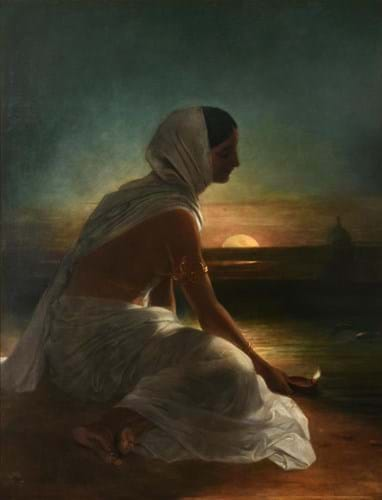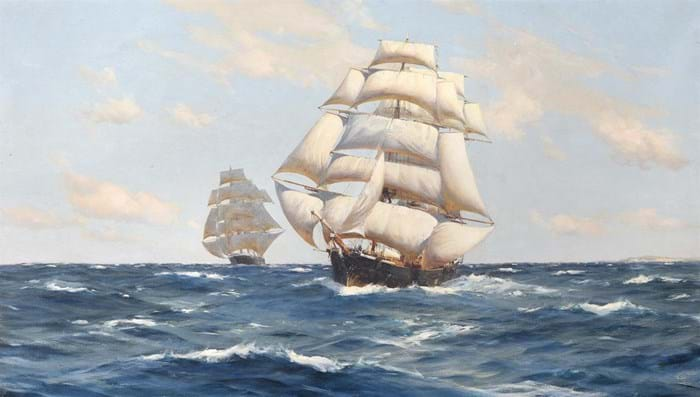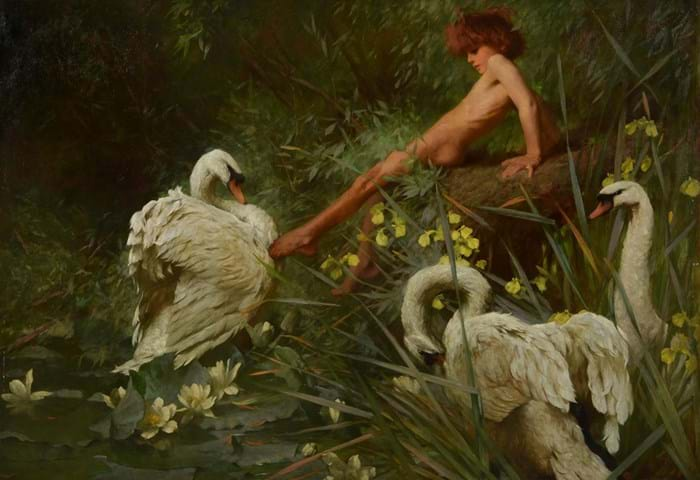1. William Daniell’s Indian scene – £110,000
Among the most famous and most commercial works by English artist William Daniell (1767-1837) are those depicting Indian scenes.
Born in Kingston upon Thames, Surrey, Daniell became an assistant to his uncle, the landscape painter Thomas Daniell (1749-1840), following the early death of his father.
Aged 16, he accompanied his uncle to India to work on producing a series of prints. He remained there for 10 years until returning to England in 1794.
The sets of aquatints they produced on their return, published as a volume titled Oriental Scenery, were a great success as the British public lapped up these atmospheric views of the scenery and architecture of the subcontinent.
While copies of the prints appear quite frequently at auctions today, original drawings and sketches are rarer while larger and fully completed oil paintings (often produced later and based on his drawings) are rarer still and highly prized. However the Dreweatts sale offered a 4ft 7in x 3ft 7in (1.4 x 1.08m) oil on canvas depicting a young woman performing a ritual on the moonlit banks of the Ganges river.
A large and moody picture, it was exhibited at the Royal Academy in 1837, where its given title was The Hindoo Girl's Offering, and it came to auction from a UK private collector.
The subject was particularly appealing. Showing a scene from the Karva Chauth festival, the woman is pictured lighting a small earthenware lamp and casting it off ‘convinced if the lamps continue to burn until they fade into the distance, that their absent lovers remain constant; on the contrary, should they become extinguished, it is held to be an augury of calamity’, according to the Royal Academy listing.
Estimated at £10,000-15,000, the auction house reported that it attracted “worldwide interest” and was eventually knocked down at £110,000.
The sum was the highest price for artist since three works offered at Christie’s in December 2016 all exceeded this level.
2. Bridell’s view of Rome – £31,000
Two views of the ruins of ancient Rome by Frederick Lee Bridell (1831-63) came to Dreweatts as part of the Berwick House collection. While furniture from the Shropshire estate was sold by the auction house on May 12, here around 70 pictures were offered from the same source.
The two Bridell pictures had been in the property since the 1870s when the house was acquired by shipbroker and merchant James Watson. The paintings, both signed oils on canvases from 1862, were bought from London dealer Arthur Tooth and Sons.
Almost identically sized at approximately 2ft 10in x 4ft 1in (88cm x 1.24m), one depicted The Arch of Titus at Rome looking towards the capital and the other showed The Temple of Saturn, the Forum and the Colosseum beyond.
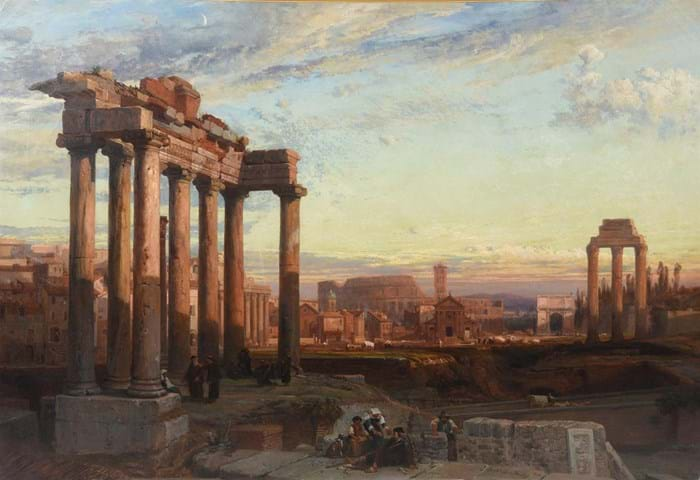
‘The Temple of Saturn, the Forum and the Colosseum, Rome’ by Frederick Bridell – £30,000 at Dreweatts.
The works dated Bridell’s spell in Italy from 1858-62, a period deemed the most successful and productive of his short career (like his mentor Richard Parkes Bonnington, he died young of tuberculosis). They demonstrated the way the artist expertly and vividly captured the sense of the classical past but also the everyday lives of shepherds, herdsman and townspeople going about their work in the eternal city.
Both works were estimated at £20,000-30,000 at Dreweatts. Selling to different UK buyers, The Arch of Titus took £31,000 and The Temple of Saturn made £30,000. Apart from a view of Lake Como from 1861 that sold for €42,000 (£37,660) at Pandolfini Casa d'Aste in Italy in December 2009, these were the highest prices for the artist at auction (source: Artprice by Artmarket)
3. Somerscales sailing race – £35,000
Another lot from the Berwick House collection bringing demand was ‘Tea Clippers Racing Up Channel’ by Thomas Jacques Somerscales (1842-1927).
The Yorkshire-born artist who was originally in the navy spent almost 30 years in Chile after being put ashore in Valparaiso due to ill health. Teaching at a local school, it was here that he began to paint professionally and the popularity of his local landscapes and marine scenes relating to Chilean naval history means he retains a large following in the country to this day.
Returning to England in 1892, he began to exhibit at the Royal Academy and his marines now held in a number of museums including Tate Britain and Greenwich Maritime Museum.
The 23in x 3ft 6in (59cm x 1.06m) signed oil on canvas from 1906 was a vintage example of his English works and it came fresh to the market having been in Berwick House for over a century. Estimated at £6000-8000, it sold at £35,000 to an international collector.
4. Lord Leighton oil sketch – £10,000
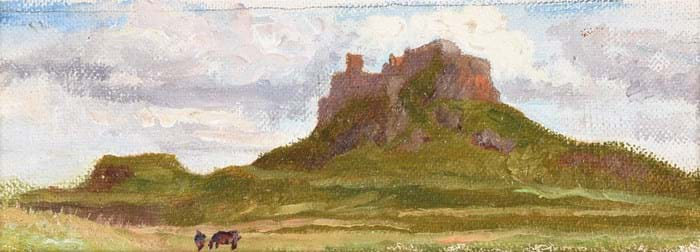
‘Lindisfarne Castle with Horse and Rider in the foreground’ by Frederic, Lord Leighton – £10,000 at Dreweatts.
The top selling lot among a group of nine pictures that came directly from the family of the artist Samuel Pepys Cockerell (1844-1921) was a small oil sketch by his friend and mentor Frederic, Lord Leighton (1830-96).
The two artists would share advice about the design and composition of their pictures and Cockerell was present alongside Leighton’s family when he died and was one of the executors of his estate.
Depicting the 16th-century Lindisfarne Castle in Holy Island, Northumberland, this picture was one of three works by Leighton at the sale showing the same subject at different times of the day. This example, a 2 x 6in (6 x 16cm) oil on canvas laid down on board, included a horse and rider in the foreground and was estimated at £2500-3500.
It sold at £10,000 to UK collector who also secured one of the other Lindisfarne views at £8000. The third work was unsold at the auction but subsequently sold after the sale for £5500 to another collector.
5. Arthur Wardle allegorical scene – £40,000
Works by the prolific Arthur Wardle (1864-1949) appear regularly on the market, most often his paintings of dogs and other hunting animals. This 3ft 7in x 5ft (1.08 x 1.53m) signed oil on canvas however was more unusual.
Titled An Idyll of Summer, it was exhibited at the Royal Academy in 1900 and appears to be a rarer example of his works with a classical theme. In this case the bucolic scene was thought to allude to the mythological figure of Cygnus who, in many of the myths in which he appeared, was transformed into a swan.
Estimated at £30,000-50,000, the auction house reported that it sold post-sale for £40,000 after strong interest came from two UK private collectors who missed the opportunity to bid in the auction itself.


